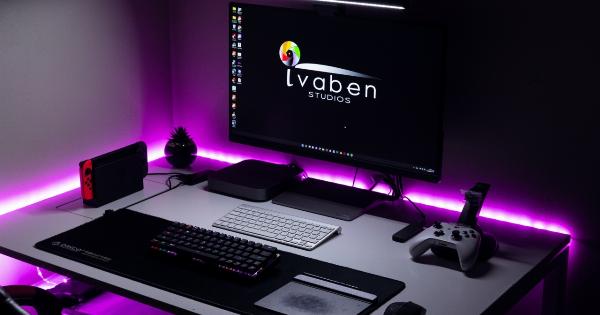Myopia, also known as nearsightedness, affects millions of people worldwide. It occurs when the eye is unable to focus light correctly on the retina, resulting in blurred vision when looking at distant objects.
Glasses and contact lenses have been traditionally used to correct myopia, but over the years, surgical options have emerged, including LASIK, PRK, and SMILE. These procedures use lasers to reshape the cornea and improve vision.
Recently, the latest generation of lasers for myopia correction, known as 8th generation lasers, have been introduced. These lasers offer enhanced safety, precision, and predictability, promising better outcomes for patients.
What are 8th Generation Lasers?
8th generation lasers are the latest iteration of lasers used in refractive surgery. They are based on femtosecond laser technology, which operates at extremely high speeds (one femtosecond is one quadrillionth of a second).
This technology allows for precise, controlled, and safe corneal reshaping, resulting in improved visual acuity and reduced side effects.
These lasers are also referred to as all-laser LASIK, due to the fact that they eliminate the need for a blade to create the corneal flap, which was necessary in previous generations of LASIK.
8th generation lasers use a high-precision laser beam to create a thin flap in the cornea, which is then lifted, allowing access to the underlying tissue for laser correction.
The Advantages of 8th Generation Lasers
Here are some of the benefits of 8th generation lasers for myopia correction:.
Enhanced Safety
8th generation lasers offer enhanced safety compared to previous technologies. This is due to the fact that the lasers operate at higher speeds, using shorter pulses, and require less energy to reshape the cornea.
As a result, the risk of complications, such as corneal scarring and infection, is significantly reduced.
Besides, 8th generation lasers are equipped with advanced eye-tracking technology that ensures the laser beam is precisely aimed at the intended location, even if the patient’s eye moves during the procedure.
This reduces the risk of errors and ensures that the treatment is accurate.
Higher Precision
8th generation lasers offer higher precision than previous technologies. The laser can produce ultra-fine, high-precision flaps, resulting in more accurate and predictable outcomes.
The cutting-edge technology also allows for individualized treatment plans that are customized to each patient, based on their unique corneal anatomy, prescription, and other factors.
The ultra-fast speed of the laser beam creates a smoother and more consistent surface after treatment. This improves the quality of vision, reducing the risk of visual disturbances, such as halos and glare.
Rapid Recovery
8th generation lasers offer a faster visual recovery compared to previous technologies. Due to the precision and accuracy of the laser, the cornea heals more quickly, resulting in shorter downtime.
Most patients can return to their normal routine within a few days after the procedure.
Improved Patient Outcomes
8th generation lasers have been shown to offer better visual outcomes and patient satisfaction compared to previous technologies. Patients report improved visual clarity, reduced dependence on glasses or contact lenses, and an improved quality of life.
The enhanced safety, precision, and predictability of 8th generation lasers result in more successful outcomes with fewer complications.
The Procedure of 8th Generation Laser Treatment
The procedure of 8th generation laser treatment is relatively simple and quick, with the whole process taking no more than 20 minutes per eye. Here are the steps involved:.
Step 1: Consultation and Examination
The first step is a consultation with an experienced surgeon who will assess your suitability for the procedure.
During this consultation, the surgeon will examine your eyes, measure your prescription and corneal thickness, and discuss the risks, benefits, and expectations of the procedure.
Step 2: Preparation
Before the procedure, the surgeon will administer numbing eye drops to ensure that you don’t feel any pain during the treatment. Your eye will be cleaned, and a small device will be used to hold your eyelids open.
Step 3: Creating the Flap
Using a femtosecond laser, the surgeon will create a thin flap in the cornea. The precision of the laser allows for a precise, uniform flap, which can be customized based on your unique corneal anatomy.
The flap is then lifted, allowing the surgeon to access the underlying tissue for laser correction.
Step 4: Laser Correction
The surgeon will use another type of laser, called an excimer laser, to reshape the cornea. The laser removes minuscule amounts of tissue from the cornea, changing its shape to correct the refractive error.
The amount of tissue removed depends on your prescription and other factors, and the laser is programmed to ensure the correct treatment is administered.
Step 5: Flap Replacement
After the laser has completed the reshaping, the surgeon will then carefully replace the corneal flap into its original position. The flap usually adheres to the underlying tissue without requiring any sutures.
Risks and Complications
Like any surgery, 8th generation laser treatment carries some risks and potential complications. However, these risks are minimal, and most patients experience no complications. Some of the possible risks and complications include:.
Infection
The risk of infection is low, but it can occur. It is essential to follow your surgeon’s post-operative instructions carefully to reduce this risk.
Overcorrection or Undercorrection
Occasionally, the laser may remove too much or too little tissue, resulting in overcorrection or undercorrection of the refractive error. This can usually be corrected with a follow-up procedure.
Dry Eyes
After the procedure, some patients may experience dry eyes, which can be treated with lubricating eye drops.
Flap Complications
Rarely, the corneal flap may not adhere properly, causing blurred or distorted vision. This can often be corrected with a follow-up procedure.
Conclusion
8th generation lasers for myopia correction offer enhanced safety, precision, and predictability compared to previous technologies.
They promise better outcomes for patients, with reduced risks of complications, faster visual recovery, and improved visual acuity. If you are interested in this procedure, consult with a qualified surgeon to determine if you are a good candidate.

























